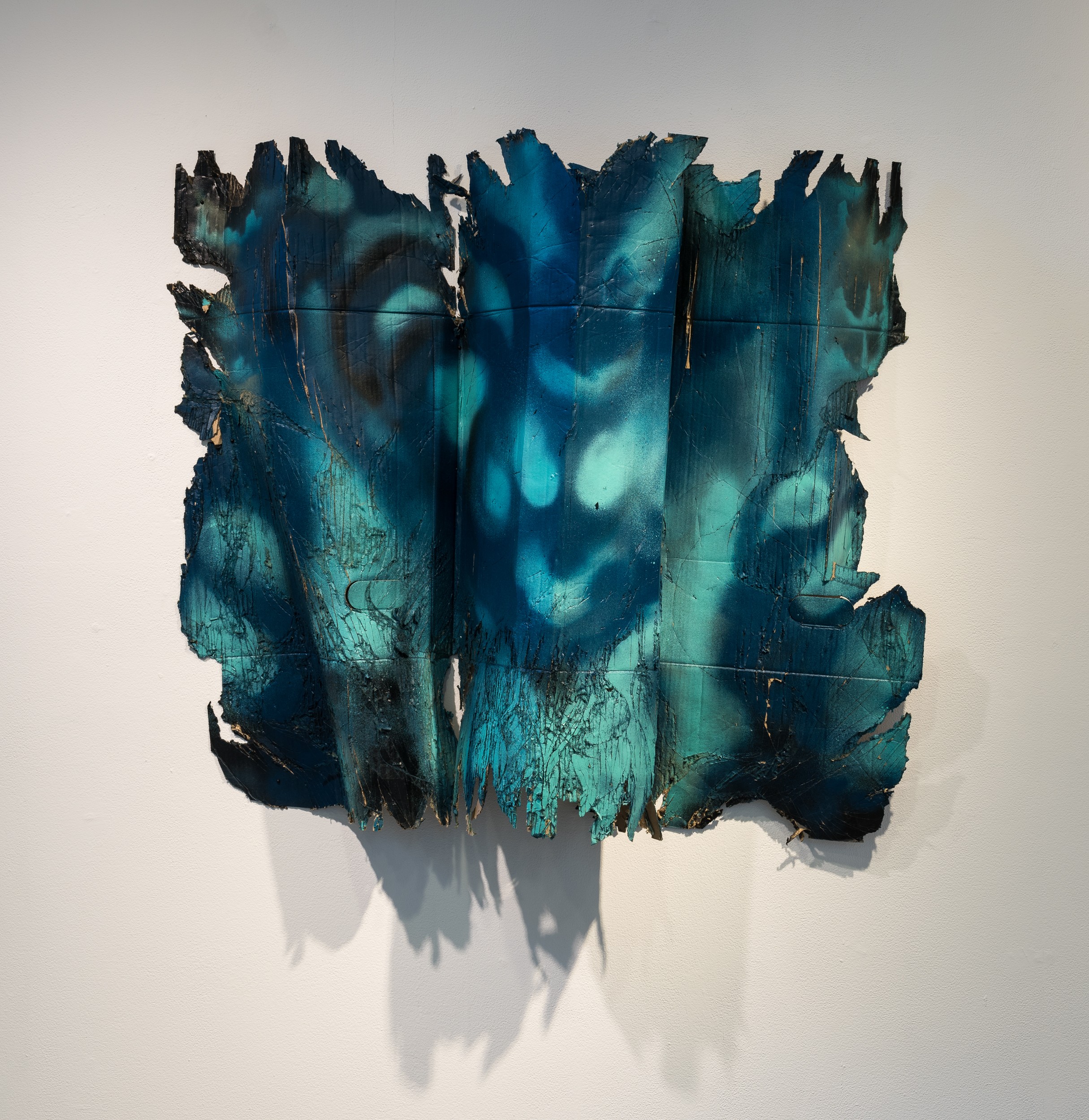
With 28 artists and designers and a bracing sinewy 31-page catalog by Graphic Design MFA student Hieu Tran, the first-year juried show was bigger than usual this year. Tran’s publication avoids plodding catalogue tropesÔÇè—ÔÇèrequisite pictures of older works, overlong statementsÔÇè—ÔÇèinstead it aggregates and presents fresh information culled from the students by guest juror and curator Ingrid Schaffner.
From the ¥┼╔½╩ËãÁ students she met, Schaffner wanted to know: “What would you be if you weren’t an artist?”
They answered: “Librarian comedienne; philosopher belly dancer; poet; biologist; entrepreneur; radical pedestrian…”
The Carnegie Museum of Art in Pittsburgh recently hired Schaffner to travel the world and craft the 2018 Carnegie International, their showcase of global contemporary art. A polymath, Schaffner is consistently fascinated, amused, and, in person, often viscerally moved. She is affable and easy to talk to. She travels light, asks good questions, and is willing to get her hands dirty. Through a flawless string of exemplary exhibitions, she has reconsidered surrealism, puppets, deep storage, queer voice, and the use of wall labels in museums; she has also written on modernist masters and worked with a diverse array of contemporary artists who are as precise, prolific, and influential as she is: from process artist Barry Le Va, to painter, printmaker, and installation artist Polly Apfelbaum, to illustrator Maira Kalman.
Schaffner asked further questions of the ¥┼╔½╩ËãÁ students, first about what is indispensable and second about what is disposable. Every answer to both of these questions could point to a kind of material life blood or treasure: awkward misprints, balls of clay, a funeral wreath, a sketch of a lamb or a sketch for an accordion book, a banana peel, a certain computer program or evidence of a slopped-up stain. The students Schaffner has brought together are challenging the materials at hand, ennobling the overlooked, making the disposable indispensable and their lived experience resonate, from who they are and who they will be.

Sarah Clough Chambers sprays, cuts, and ripples sheets of cardboard into haunting insect-like masks. Sutton Demlong interlocks wood beams most likely from a Baltimore row house; the beams cradle but threaten to pop a giant balloon. Doohyun Yoon ornaments the abandoned and flakey innards of a formerly motivational school bulletin board. Josh Sender inks dense overlapping drawings of the most expensive buildings in the world onto the gallery window, conjuring the spirit of all of the other buildings in the world instead. Julia “Cheeny” Celebrado-Royer re-creates memories from family photographs, including her father’s motorcycle created mostly ad-hoc from cardboard, packing tape, and twine.
Schaffner worked with the students and the exhibitions staff at ¥┼╔½╩ËãÁ for three days to place and install the students’ work. She listened, joked, gave a nudge here and there-”Go get one of those pedestals.” “Can you make that into a video?” “How about drawing that on the window?” “How does it look over there?” “I want to get this one in there, too.”
She tried to assure that her placement, and her care, would help the students see fully what they were up to, if they weren’t seeing it already…
Many are coming back to school after a year of police brutality protests and peace marches. When they aren’t in the gallery, or at the table saw, the press, or the printer, these students are busy with other things. This year, they will attend the Community Arts Power Lecture Series featuring local change agents, and much as they engaged with Schaffner, they will engage with artists including Charles Long, Nicola Lopez, Byron Kim, Torwkase Dyson, curators Pablo Helguera and Robert Storr, critics Barry Schwabsky and Michelle Kuo, and designers including Benedikt Reichenbach and Bonnie Siegler. They will take electives in community engagement, social justice, creative writing, professional development, and critical theory; they will help grow maker spaces and go to book fairs. They will make their own hardware and shout on the bike ride back from the Baltimore Museum of Art. They will focus, and they won’t. They will fill their pockets and the backs of trucks, and they will expand their fields of vision.
Marcus Civin was ¥┼╔½╩ËãÁ’s associate dean of graduate studies for curriculum and assessment. He is also a critic and performance artist.